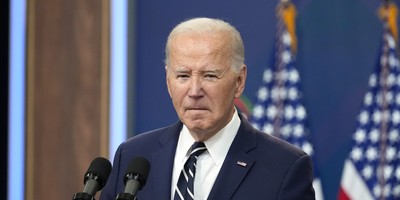In the balancing act going on in Washington right now, for one side the term is layered with meaning, while for the other, its meaning could not be clearer. For President Obama and the Democrats, first and foremost balance means making sure the “wealthiest Americans” ante up and pay their “fair share.” Never mind those in the highest tax brackets are now paying the highest rates that they have paid in over three decades, while middle and lower brackets are paying the lowest.
As for applying the term to budgets, the Democrats take a far more libertine position. Barack Obama recently said, “My goal is not to chase a balanced budget just for the sake of balance.”His fellow Democrats in Congress apparently share this view with the House offering a budget that balances around 2040, and the Senate Democrats having put forward a plan that never balances the budget at all.
By way of contrast, Paul Ryan offered a plan that actually balances the budget in ten years and the Republican Study Committee plan does it in four. These plans both focus on creating the proper environment for the robust economic growth needed to put the ten of millions of Americans who still need jobs, back to work. Both rely on the time-tested formula for balancing budgets that has enjoyed bi-partisan support in the past: lower tax rates while eliminating special interest loopholes, and control spending.
In the 1960s, John Kennedy did not let the Democratic Party’s ideology, going back to the heady days of the New Deal, hold him back from proposing tax reforms aimed at getting the economy moving again. In a noteworthy speech to the Economic Club of New York,” the first and only Catholic President said with a grin on his face, “I feel tonight somewhat like I felt when I addressed in 1960 the [very Protestant] Houston Ministers Conference on the separation of church and state. But I am glad to have a chance to talk to you tonight about the advantages of the free enterprise system,” drawing laughter from the crowded room of business leaders.
Recommended
JFK went on to make the case for an “across-the-board, top-to-bottom cut in personal and corporate income taxes,” while eliminating loopholes in the tax code in order to stimulate economic growth, put Americans back to work, and ultimately generate more tax revenue. The law when passed in 1964 reduced the top marginal income tax rate from 90 percent to 70 percent and lowered other tax brackets as well. The economy experienced over 5 percent GDP growth per year during the next four years and unemployment fell to 3.9 percent. Meanwhile, revenues doubled during the 1960s, and the federal government experienced a budget surplus by the end of the decade.
Ronald Reagan pointed to Kennedy’s example when it came time to get the economy moving again in the early 1980s. With the Democrats enjoying a significant majority in the House, and Republicans holding a slight one in the Senate, Congress passed his tax reforms taking the top tax rate from 70 percent to 50 percent in 1981 and later during Reagan’s second term to 28 percent. The economy took off growing an average 5 percent a year, and unemployment fell in half to just under 5 percent. Once again revenues to the federal treasury nearly doubled.
President Bill Clinton took a bi-partisan tack following the Republican Revolution of 1994, when the GOP took both houses of Congress for the first time in 40 years. After raising taxes during his first two years in office, he worked with Republicans to cut the capital gains tax rate, created a $500 child tax credit, among other tax cutting measures. During the last four years of Clinton’s Presidency, the annual GDP growth rate averaged 4.5 percent versus 3.3 percent during the first and unemployment dropped to 4 percent. Even with the more modest tax reforms, revenues increased from just under $1.5 trillion in 1996 to over $2.0 trillion in just five years, leading to budget surpluses.
Our times are crying out for such a bi-partisan approach to solving our nation’s fiscal and economic challenges. Six years after the recession began unemployment still lingers at 7.7 percent, which is slightly higher than it was when President Obama took office. Despite four straight years of record levels of spending and trillion dollar plus deficits, economic growth during the last quarter was 0.1 percent and under 2 percent for the entire year. Meanwhile, revenues still have not reached the level they were when President Bush left office.
What is needed is not more taxing and spending, as proposed by the Democrats. What is needed is what Paul Ryan and the Republicans are offering: lower tax rates and controlled spending. Barack Obama can remain a strict ideologue and stymie the country’s growth and potential for another four years. Or, he can put country above party and take the steps necessary to restore the American dream.

























Join the conversation as a VIP Member